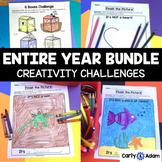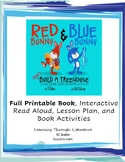166 results
Critical thinking physics dbqs

The Sinking of the Lusitania: Solve the WWI Mystery w Primary Source Analysis!
Perhaps one of the most important events of World War One, the sinking of the Lusitania has fascinated kids and adults for years. Use this mystery to harness that fascination and engage students in an inquiry-based mission that they will remember all year long!In this mystery, students are posed with an engaging scenario - they are CIA Agents that must piece together once and for all how and why the Lusitania sank. They are presented with a variety of "exhibits," all cleverly designed to engage
Grades:
5th - 12th
Types:
Also included in: GROWING WWI BUNDLE: Higher Order Thinking WWI Activities (SS5H2)
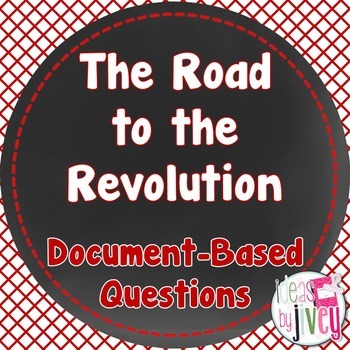
Road to the American Revolution DBQ Document-Based Questions
American RevolutionDocument-Based Questions (DBQs) are a great way to expose students to primary sources as well as to make them think about an event in history and respond to it. This unit can be used in a few ways. You can project the full-page images on my board so that we can discuss them, and then the students answer the DBQ in their notebooks. I have also included the DBQs in printable format so that your students can answer on paper and digital Google Forms that you can send electronicall
Grades:
4th - 6th
Types:
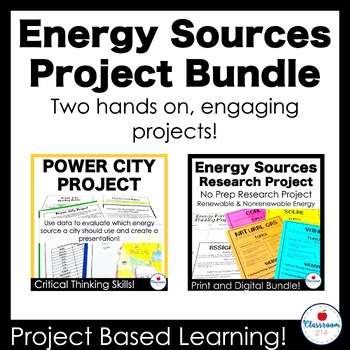
Renewable and Nonrenewable Energy Sources Project Bundle
Two dynamic renewable and nonrenewable energy sources projects. Student will apply research skills to learn about renewable and nonrenewable energy sources and then apply their knowledge to help a fictional community decide which two energy sources are best for their town. These projects put students in charge of their learning and keep them motivated with real life scenarios while improving their critical thinking, persuasive writing, and public speaking skills, and research skills. Minimal p
Subjects:
Grades:
5th - 8th
Types:
NGSS:
MS-ESS3-1
, MS-ESS3-4
, MS-ESS3-3
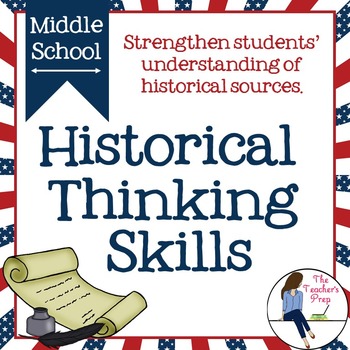
Historical Thinking Skills Activities
Historical thinking is a key skill for students to utilize when examining primary and secondary sources. In order for students to fully understand a source, they must examine it in-depth. These activities are designed to strengthen student's understanding of historical sources. They can be used with any type of historical document.
The Historical Thinking Skills Activities includes:
***Teacher Resources***
1. What is Historical Thinking (A letter for the teacher)
2. Think and Link – the step
Grades:
5th - 8th
Types:

Slavery in the Southern Colonies: A Socratic Seminar
Looking for a higher order thinking activity? Need a way to close out a unit on the Southern Colonies? Do you want to do a Socratic Seminar with your students? Students will evaluate three primary source documents to answer document-based questions. Students will engage in higher-level thinking and improve listening and speaking skills during this common-core supported activity. This activity is appropriate for 5th-7th graders and meets the Common Core Standards for Speaking and Listening.
If
Grades:
5th - 8th
Types:
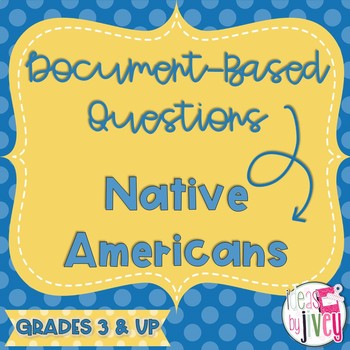
Native Americans DBQ Document-Based Questions
Native AmericansDocument-Based Questions (DBQs) are a great way to expose students to primary sources as well as to make them think about an event in history and respond to it. This unit can be used in a few ways. You can project the full-page images on my board so that we can discuss them, and then the students answer the DBQ in their notebooks. I have also included the DBQs in printable format so that your students can answer on paper and digital Google Forms that you can send electronically.
Grades:
3rd - 6th
Types:
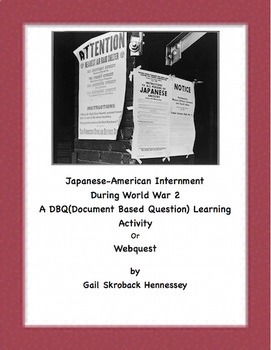
DBQ: Life of a Japanese-American Child Living in an Internment Camp during WW2)
Using PRIMARY Sources in the Classroom. A DBQ activity uses primary sources. Sources can include diaries,posters, music, news articles from the time, anything written by those who participated in or witnessed an event in history. Students review the given documents and use many cognitive skills in processing what they see and read. After gathering information using the documents, students develop an essay answering a question. The topic of this Primary Source(DBQ )is Life of a Japanese-American
Grades:
5th - 8th
Types:

130 Rigorous Physics in Sports Document Based Questions – w/Answer Key
This resource includes 20 rigorous nonfiction selections connecting physical science and physics to sports using document based questions (DBQs) with a provided answer key. These highly interesting selections will capture the attention of students as they use guided questions to illustrate how properties of physics are involved in some of the most popular sports that they enjoy. This 57-page document includes 20 nonfiction sports selections with a total of 130 guided questions and answers. Th
Subjects:
Grades:
6th - 12th
Types:
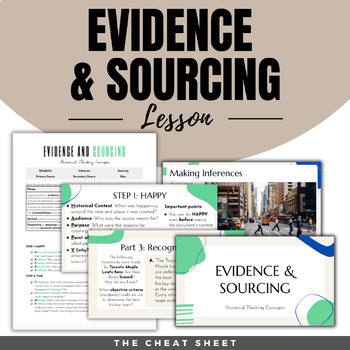
Evidence and Sourcing Lesson: Teaching Historical Thinking - Digital & Print!
This engaging lesson focuses on the Historical Thinking Concept of EVIDENCE AND SOURCING. Students will develop their historical thinking and critical analysis skills, including the following:Making inferencesPrimary vs Secondary SourcesRecognizing Bias and Reliability of sourcesSourcing historical documents using the HAPPY TIME sourcing methodAnalyzing several primary and secondary source documentsThis lesson includes the following materials:Detailed lesson planGoogle slides with big question,
Grades:
7th - 12th, Higher Education, Adult Education
Also included in: Historical Thinking Bundle: A Complete Unit - Digital & Print!

Analyzing Renaissance Art: Primary Source Activity
Students will build their understanding of primary sources as they collaborate to analyze five key pieces of Renaissance art to better understand its themes and concepts. A great way to introduce the Renaissance, wrap up the chapter, buffer some time between your last bit of notes and the test, close out Friday or liven up Monday, this student-centered, collaborative, and engaging activity will have you covered. Slides are included to allow for a full class discussion and formative assessmen
Subjects:
Grades:
6th - 12th
CCSS:
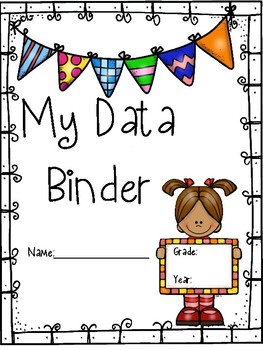
Data Binder Cover Sheets
Here are a few adorable binder covers for your kiddos to add to their data binders!
Subjects:
Grades:
1st - 5th
Types:
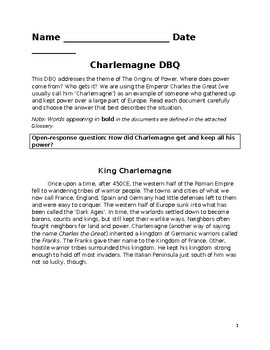
Charlemagne DBQ
This DBQ addresses the theme of The Origins of Power. Where does power come from? Who gets it? We are using the Emperor Charles the Great (usually called ‘Charlemagne’ in the English world) as an example of someone who gathered up and kept power over a large part of Europe. Students are challenged to read primary documents carefully and choose the answer that best describes the situation.
We begin by setting the stage with a very brief synopsis of Western Rome falling. The Germanic tr
Grades:
8th - 11th
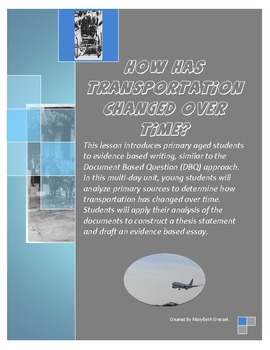
Primary Sources & Evidence Based Essays: Transportation
How has transportation changed over time? This lesson introduces primary aged students to evidence based writing, similar to the Document Based Question (DBQ) approach. In this multi-day unit, young students will analyze primary sources to determine how transportation has changed over time. Students will apply their analysis of the documents to construct a thesis statement and draft an evidence based essay. In this unit, the primary sources students will examine are photographs. Photographs ar
Grades:
K - 3rd
Types:

Nazi Germany - how did Hitler and the Nazis indoctrinate children DBQ
This lesson is designed too help students understand why Hitler and the Nazi Party tried to indoctrinate young people and children in their beliefs. It then aims to explain how the Nazi Party did this.The lesson contains:- Two document/source based starter activities.- Worksheet of Primary sources and information on the HItler youth.- Extensive questions on the sources.- Essay planning sheet answering the question "To what extent did the Nazi party use fear to indoctrinate children into the
Grades:
8th - 11th
Also included in: NAZI GERMANY HISTORY BUNDLE
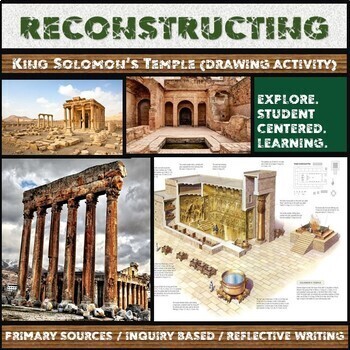
Reconstructing Solomon's Temple (Drawing Activity)
A fun activity that plays to a wide variety of strengths, skill sets and interests. Students will investigate different examples and elements of Phoenician architecture as well as primary source accounts before creating a reasonable sketch of King Solomon's Temple. I have used this with my world history students during the unit on ancient Israel and found that it makes a good research and analysis lesson, and allows for students to have the freedom to explore and draw reasonable conclusions.
Grades:
6th - 12th
Types:
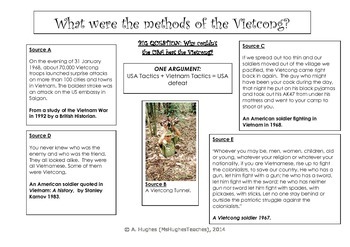
What were the methods of the Vietcong during the Vietnam War? DBQ
This worksheet uses contemporary sources to investigate the different methods used by the Vietcong fighters during the Vietnam war. The focus is on the Guerrilla tactics and the American GI's reactions to them. Students have to be able to infer from the sources to get a fuller picture of the methods used by the Vietnamese.I use this lesson as part of several on the methods of the Vietcong AND the methods of the American troops to help explain why America was unable to win the war.Students have
Subjects:
Grades:
8th - 12th
Types:
Also included in: Vietnam War History GROWING BUNDLE
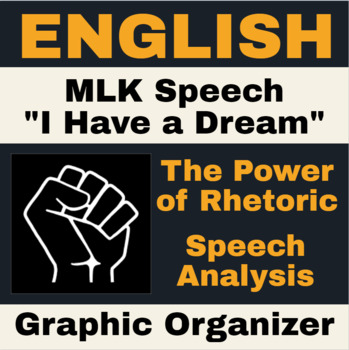
ENGLISH | MLK Speech: "I Have a Dream" The Power of Rhetoric - Speech Analysis
This lesson allows students read, explore, and analyze Dr. Martin Luther King's speech during the March on Washington during the civil rights movement. Students examine his speech, as he uses metaphors, poems, famous quotes, and hymns to convey a powerful message as he calls for equality and freedom in one of the most iconic speeches in American history.Students use a graphic organizer as they go through the document. Allowing for question prompts, help with vocabulary, and background informati
Grades:
9th - 12th, Adult Education
Types:
CCSS:

Taking a Stand in History: Ancient Rome- The Brothers Gracchi & Spartacus FRQ
Inspire and encourage critical thinking skills. Learn about interesting figures in Ancient Rome. Meet ELA Common Core Standards in History ClassPrepare for National History Day (This is built around the Taking a Stand Theme)This Free Response Question (FRQ) Activity provides guided research questions and two essays. After taking notes on the Brothers Gracchi (Gaius and Tiberius Gracchus) as well as Spartacus and the Third Serville War, students complete TWO included FRQs. They must support the
Grades:
9th - 12th
Types:
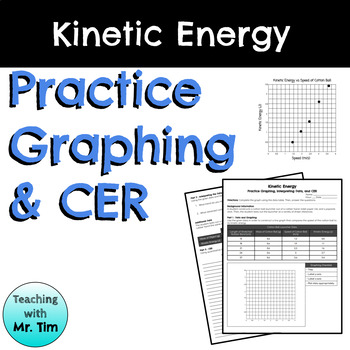
Kinetic Energy Practice CER and Graphing Data
Are you in need of a resource that allows your students to practice their graphing abilities as well as their argumentative skills? This activity is perfect for you!Included:Student WorksheetAnswer Key---The overarching question for the worksheet is: What are the two variables that affect an object's kinetic energy?Students will answer this question using the Claim, Evidence, and Reasoning format. On the front of the sheet, students are given the data table for a student's trial data from testin
Subjects:
Grades:
7th - 8th
Types:
NGSS:
MS-PS3-1
Also included in: 8th Grade Science Practice CER BUNDLE - NO PREP
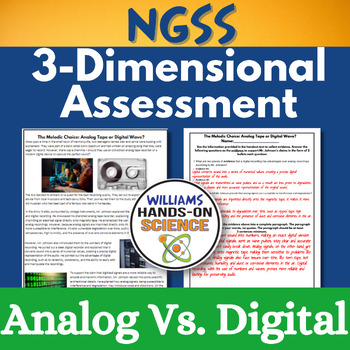
CER Analog V Digital NGSS 3 Dimensional Assessment MS-PS-4-3 Spanish Test Prep
Struggling to create an NGSS 3-Dimensional assessment? This resource features an engaging assessment aligned with the Next Generation Science Standards (NGSS), integrating disciplinary core ideas, crosscutting concepts, and science and engineering practices. With a focus on depth of understanding, critical thinking, and application of knowledge, this assessment empowers students to master key concepts on the differences between Analog and Digital signals, while preparing them for real-world chal
Grades:
7th - 11th
NGSS:
MS-PS4-3
Also included in: Wave Properties NGSS Electromagnetic Spectrum Print Digital Bundle
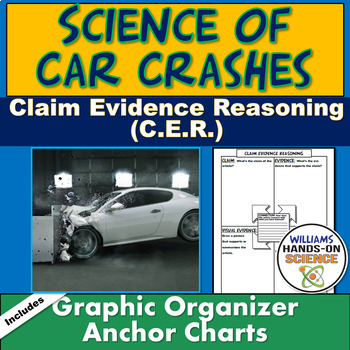
NGSS Claim Evidence Reasoning Physics Car Crashes Digital
With this product students will learn about some of the science behind car crashes by reading an article from abcscience.com. The article asks if double a car’s speed double the force of impact. What the article explains using the equation for Kinetic Energy (KE=1/2mass x velocity²), is that impact force actually increases by 4-6 times when velocity doubles! Students will use evidence in the article that the author provides, draw visual evidence and reason why the data supports the author’s clai
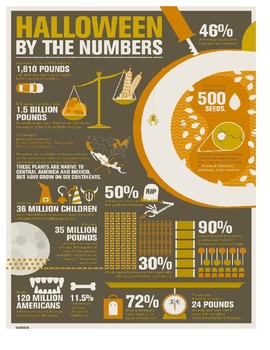
Halloween Infographic Analysis
Students analyze data from 10 different infographics about Halloween. I plan to lay out the 10 infographics around the room and let students rotate through the different stations. You could also upload the infographics to an online learning page, like Schoology, and have students answer the questions from the computer. *Note: the printers at my school do not print in color. All of the questions students will be able to answer without the colors on the graphs.
Subjects:
Grades:
8th - 12th
Types:
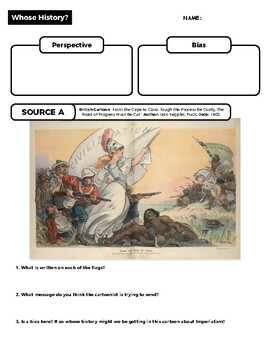
Whose History? - Cartoon Analysis: Bias and Perspective in Imperialist Cartoons
This lesson explores the role perspective and bias play in shaping history. Using primary sources, students are prepared to identity bias in political cartoons created during the height of European imperialism. In particular students will explore the ways in which racial and cultural biases sought to justify European imperialism. In the case of studying imperialism, the brutal reality of colonization is often ignored or justified by the racial and cultural biases of European historians. This mat
Grades:
8th - 10th
Types:
CCSS:
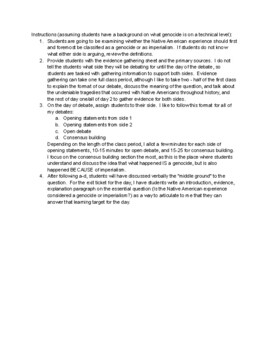
Native American Genocide Structured Academic Controversy
With this structured academic controversy, students critically examine Native American history to answer the question: Should the Native American experience be considered a genocide or imperialism? Students scrutinize primary sources of events that happened, debate the essential question, and find the middle ground with this multi-day lesson.
Grades:
7th - 10th
Types:
Showing 1-24 of 166 results

